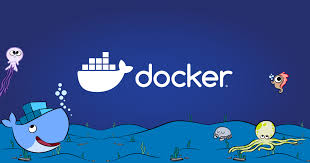Create a image which runs on port 8080 apache2 & nginx
 Abhay Dandge
Abhay Dandge
Creating an image that runs both Apache HTTP Server (Apache2) and NGINX on port 8080 is an interesting challenge in containerization and web server management. Here's a comprehensive guide that explores how to achieve this, covering Dockerfile creation, configuration, networking, and deployment considerations.
Introduction to Docker and Containerization
Docker has revolutionized software deployment by enabling the packaging of applications and their dependencies into standardized units called containers. Containers provide consistency across development, testing, and production environments, ensuring applications run seamlessly regardless of the underlying infrastructure. NGINX and Apache2, two popular web servers, can be efficiently managed and deployed using Docker containers, allowing developers and system administrators to streamline deployment processes and enhance scalability.
Understanding NGINX and Apache2
NGINX Overview
NGINX is a high-performance web server known for its speed, efficiency, and scalability. Originally designed as a reverse proxy server, NGINX is widely used today as a web server, load balancer, and HTTP cache. Key features include:
Efficient handling of concurrent connections.
Support for reverse proxying, load balancing, and caching.
Flexible configuration through a declarative language.
Apache2 Overview
Apache HTTP Server, commonly referred to as Apache2, is one of the oldest and most widely used web servers globally. Known for its modularity and extensibility, Apache2 supports a wide range of features and configurations, including:
Virtual hosting to host multiple websites on a single server.
Extensive module support for functionalities like SSL/TLS, URL rewriting, and authentication.
Robust community support and extensive documentation.
Example
Dockerizing Apache2
Creating a Dockerfile for Apache2
To create a Docker image that runs Apache2 on port 8080, we'll start by defining a Dockerfile. The Dockerfile specifies the instructions needed to build the Docker image, including installing software packages, configuring settings, and exposing ports.
# Start with a base image
FROM docker.io/ubuntu
# Install NGINX and Apache2
RUN apt update -y
RUN apt install apache2 -y
# Configure Apache2 to listen on port 8080
RUN sed -i 's/Listen 80/Listen 8080/g' /etc/apache2/ports.conf
# Expose port 8080
EXPOSE 8080
# Start NGINX and Apache2 services
CMD service apache2 start
Explanation of Dockerfile Instructions
FROM ubuntu:latest: Specifies the base image as the latest Ubuntu version.
RUN apt-get update && ...: Updates package lists and installs Apache2. Cleans up after installation to reduce image size.
RUN sed -i 's/80/8080/g' ...: Modifies Apache2 configurations to listen on port 8080 instead of the default port 80.
EXPOSE 8080: Informs Docker that the container will listen on port 8080 at runtime.
CMD service apache2 start ...: StartsApache2 services when the container starts and keeps the container running
Building and Running the Docker Image
To build the Docker image:
docker build -t apache2 .
To run the Docker container:
docker run -d -p 8080:8080 apache2
Testing the Setup
After running the Docker container, you can test the setup by accessing http://localhost:8080 in your web browser. Apache2 should also respond, demonstrating that both servers are running on port 8080 within the Docker container.
Same For NGINX
Conclusion
In conclusion, Docker provides a powerful platform for managing and deploying web servers like NGINX and Apache2. By containerizing these services, developers gain flexibility, scalability, and consistency in application deployment across different environments. This guide has demonstrated how to create a Docker image that runs both NGINX and Apache2 on port 8080, showcasing the ease and efficiency of using Docker for managing complex web server configurations. By leveraging Docker's capabilities, organizations can streamline their development processes and enhance the reliability and scalability of their web applications.
Subscribe to my newsletter
Read articles from Abhay Dandge directly inside your inbox. Subscribe to the newsletter, and don't miss out.
Written by

Abhay Dandge
Abhay Dandge
Hello, I'm Abhay, a DevOps Engineer passionate about optimizing operations through automation, continuous integration, and deployment. Over the past year, I've sharpened my skills in the fast-paced world of DevOps and Cloud Computing. My journey has been defined by hands-on experience and a commitment to exploring the latest technologies. ╭━━━╮╱╱╱╱╱╭━━━╮ ╰╮╭╮┃╱╱╱╱╱┃╭━╮┃ ╱┃┃┃┣━━┳╮╭┫┃╱┃┣━━┳━━╮ ╱┃┃┃┃┃━┫╰╯┃┃╱┃┃╭╮┃━━┫ ╭╯╰╯┃┃━╋╮╭┫╰━╯┃╰╯┣━━┃ ╰━━━┻━━╯╰╯╰━━━┫╭━┻━━╯ ╱╱╱╱╱╱╱╱╱╱╱╱╱╱┃┃ ╱╱╱╱╱╱╱╱╱╱╱╱╱╱╰╯⠀⠀⠀⠀⠀⠀⠀⠀⠀⠀⠀⠀⠀⠀⠀⠀⠀⠀⠀⠀⠀⠀⠀ In my tech toolkit, I’ve got the skills to make things run smoother: containerization, cloud platforms, and flawless CI/CD pipelines. My goal? To supercharge software delivery for organizations, making it faster and more efficient, all while keeping things top-notch and rock-solid. Let’s keep it cool and reliable! 🅃🄴🄲🄷 🅂🅃🄰🄲🄺 🔲 Cᴏɴᴛᴀɪɴᴇʀɪᴢᴀᴛɪᴏɴ -: Dᴏᴄᴋᴇʀ | Pᴏᴅᴍᴀɴ | Bᴜɪʟᴅᴀʜ | CᴏɴᴛᴀɪɴᴇʀD 🔲 Cᴏɴᴛᴀɪɴᴇʀ Oʀᴄʜᴇsᴛʀᴀᴛɪᴏɴ -: Kᴜʙᴇʀɴᴇᴛᴇs | Dᴏᴄᴋᴇʀ Sᴡᴀʀᴍ 🔲 Cʟᴏᴜᴅ Pʟᴀᴛғᴏʀᴍs -: AWS 🔲 Aᴜᴛᴏᴍᴀᴛɪᴏɴ ᴀɴᴅ Sᴄʀɪᴘᴛɪɴɢ-: Bᴀsʜ, Pʏᴛʜᴏɴ * Linux Administration (RHCSA) 🔴 * DevOps methodologies. * CLA (Certified Linux Admin) * CCA (Certified Container Admin) -̶-̶-̶-̶-̶-̶-̶-̶-̶-̶-̶-̶-̶-̶-̶-̶-̶-̶-̶-̶-̶-̶-̶-̶-̶-̶-̶-̶-̶-̶-̶-̶-̶-̶-̶-̶-̶-̶-̶-̶-̶-̶-̶-̶-̶-̶-̶-̶-̶-̶-̶-̶-̶-̶-̶-̶-̶-̶-̶-̶-̶-̶-̶-̶-̶-̶-̶-̶-̶-̶-̶-̶-̶-̶-̶-̶-̶-̶-̶-̶-̶-̶-̶-̶-̶-̶-̶-̶-̶-̶-̶-̶-̶-̶-̶-̶-̶-̶-̶-̶-̶-̶- How can I help you? I can help you with the optimization and scalability of your infrastructure with my expertise in Linux, Containers, AWS, and orchestration. From streamlining deployments with Docker and Kubernetes to maximizing cloud efficiency, I'll ensure your systems are robust and scalable. Let's tackle your challenges and take your projects to the next level. Let's connect and discuss how we can collaborate! :) -̶-̶-̶-̶-̶-̶-̶-̶-̶-̶-̶-̶-̶-̶-̶-̶-̶-̶-̶-̶-̶-̶-̶-̶-̶-̶-̶-̶-̶-̶-̶-̶-̶-̶-̶-̶-̶-̶-̶-̶-̶-̶-̶-̶-̶-̶-̶-̶-̶-̶-̶-̶-̶-̶-̶-̶-̶-̶-̶-̶-̶-̶-̶-̶-̶-̶-̶-̶-̶-̶-̶-̶-̶-̶-̶-̶-̶-̶-̶-̶-̶-̶-̶-̶-̶-̶-̶-̶-̶-̶-̶-̶-̶-̶-̶-̶-̶-̶-̶-̶-̶-̶-̶-̶-̶-̶-̶-̶-̶-̶-̶-̶-̶-̶- ………………………………………………………………… #devops #devsecops #sre